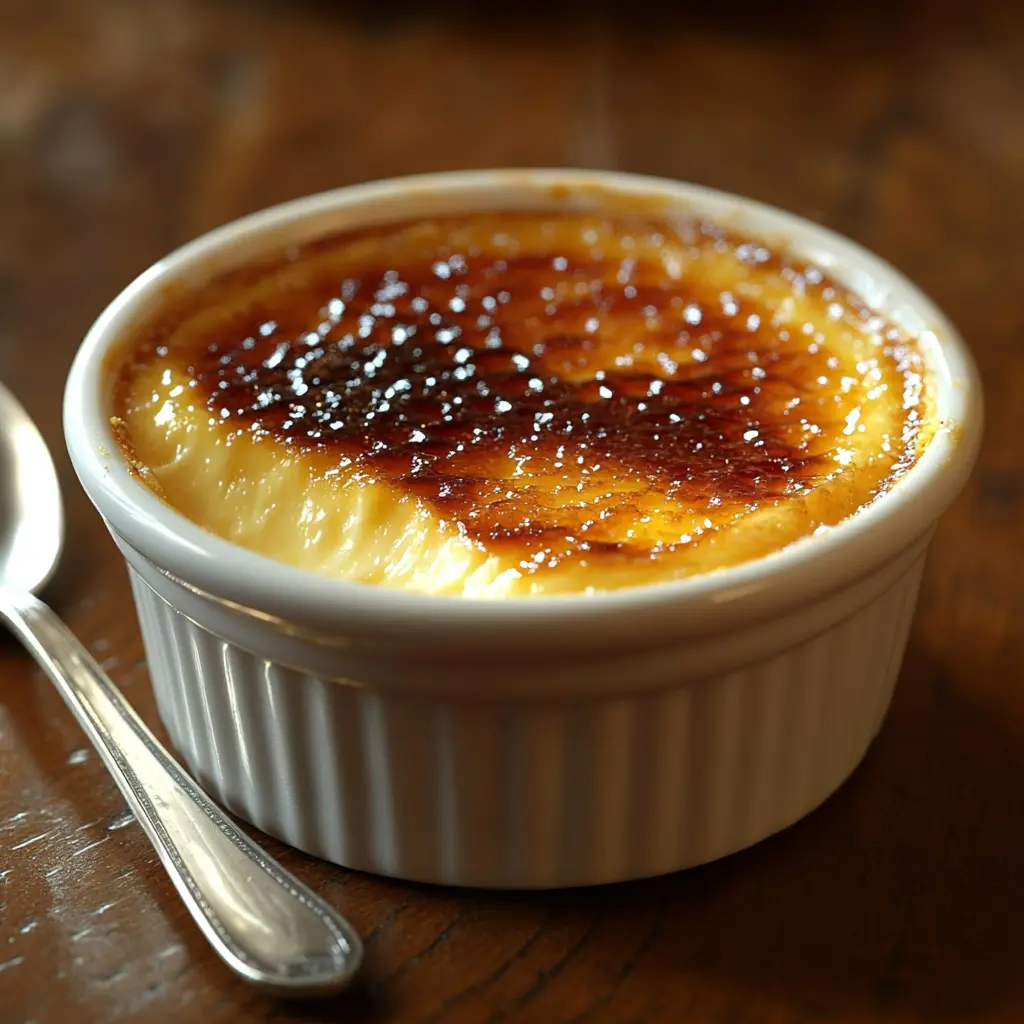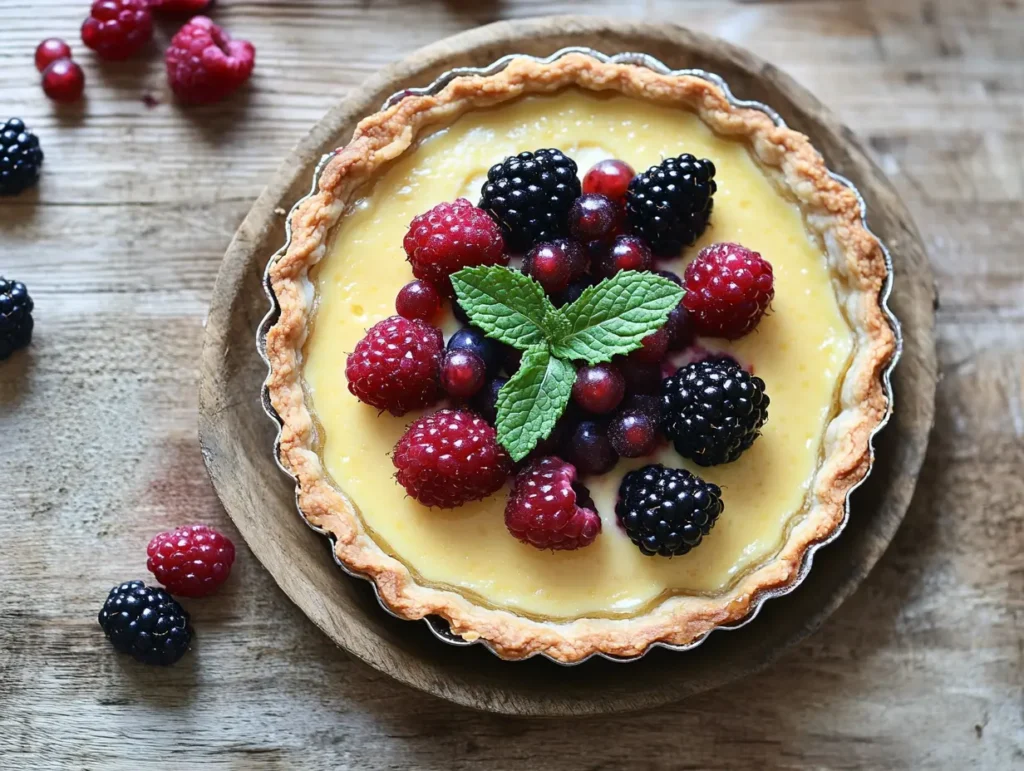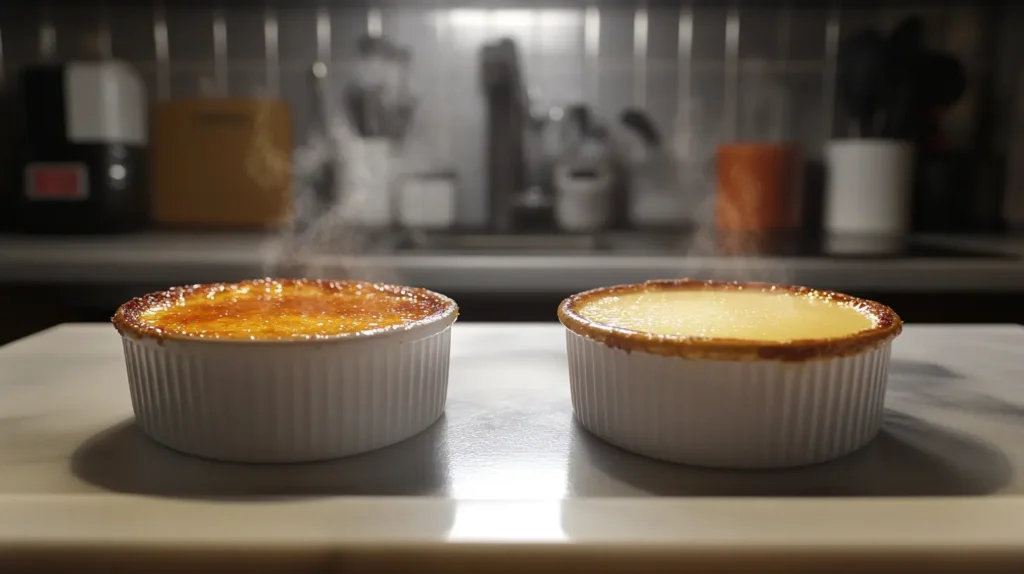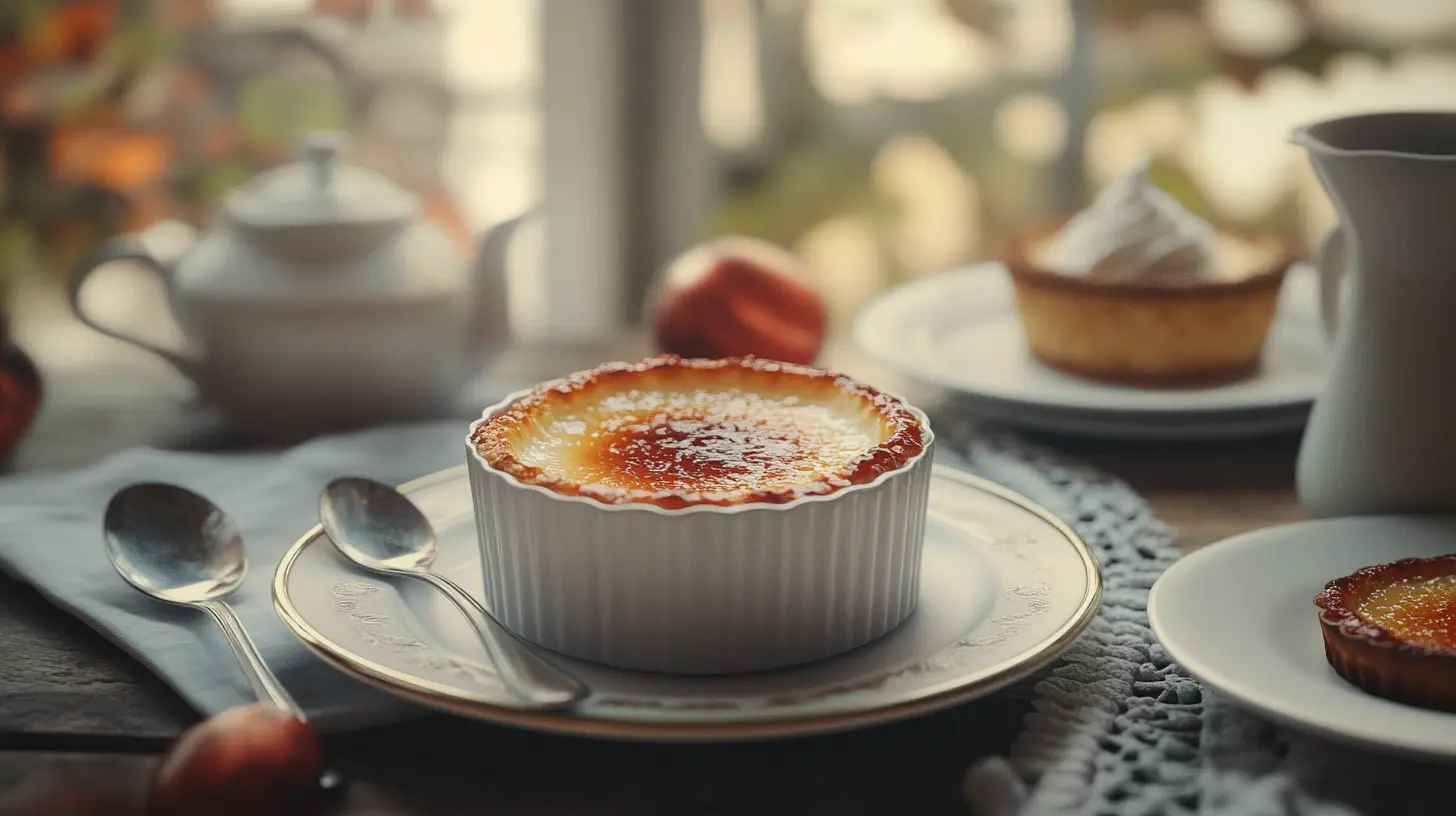Have you ever found yourself at a fancy restaurant, gazing at the dessert menu, and wondering, what’s the difference between crème brûlée and custard? 🍮 These two creamy delights might look similar, but they each bring their unique flair to the table. If you’ve been curious or simply want to impress your friends with some dessert trivia, you’re in the right place! Let’s dive into the world of custards, uncover the secrets of crème brûlée, and figure out what makes them shine.
Table of Contents
Introduction: A Sweet Debate
Desserts have a special way of making people smile, don’t they? But sometimes, even the sweetest treats can spark a little confusion. Crème brûlée and custard are like siblings—they share some DNA but couldn’t be more different in personality. One has a crunchy, caramelized shell that begs to be cracked, while the other is versatile, showing up in pies, trifles, and even as a sauce. Are they the same thing? Not quite. Let’s explore.
What is Crème Brûlée?

Crème brûlée is like the elegant star of a black-tie event. Everything about it screams luxury—from its smooth, creamy base to its dramatic, caramelized sugar crust. You’ve probably seen it served in small ramekins, with that golden-brown topping practically daring you to crack it with a spoon. But what’s the secret to achieving that perfect balance? Discover the essential crème brûlée techniques.
History and Origins
Did you know that crème brûlée has been delighting dessert lovers for centuries? The term translates to “burnt cream” in French, but its history is a bit more complicated. Some say it originated in England as “Trinity Cream,” while others argue it was born in France. Either way, this dessert has found a place in hearts (and stomachs!) worldwide.
“Crème brûlée is more than a dessert; it’s a love letter to indulgence.” ❤️
Key Ingredients
Making crème brûlée is all about keeping it simple yet sophisticated. But did you know that the type of cream you use can make all the difference? Learn more about the best cream choices for crème brûlée. Here’s what you’ll need:
| Ingredient | Quantity |
|---|---|
| Heavy Cream | 2 cups |
| Egg Yolks | 5 large |
| Granulated Sugar | ½ cup |
| Vanilla Extract | 1 tsp |
| Sugar (for caramelizing) | 2 tbsp |
With just five ingredients, crème brûlée transforms into a show-stopping dessert that’s surprisingly easy to make at home. Ready to try it yourself? 😉
Texture and Flavor Profile
Crème brûlée is a game of contrasts. Imagine a rich, velvety custard underneath a crispy, bittersweet sugar shell. That first crack with your spoon? Pure satisfaction. The subtle vanilla aroma paired with the creamy texture makes every bite a dream.
What is Custard?

Custard, on the other hand, is like the Swiss Army knife of desserts. It’s versatile, dependable, and perfect for any occasion. Whether it’s baked into a tart, layered in a trifle, or served on its own, custard knows how to fit in anywhere.
History and Origins
Custard dates back to medieval Europe when it was primarily used as a filling for pastries. Over time, it evolved into a dessert on its own. From British trifles to Asian egg custard buns, this creamy treat has truly gone global.
“Custard is like a blank canvas for dessert lovers—ready for your creative touch.” 🎨
Types of Custard
Custard isn’t just one thing; it comes in several forms. Let’s break it down:
Baked Custard
Thicker and more structured, baked custards are cooked in the oven. Think of flan or crème caramel.
Stirred Custard
This pourable version is made on the stovetop and often used as a sauce or filling.
Set Custard
Firm enough to hold its shape, this type is typically used in custard tarts.
| Type | Examples |
|---|---|
| Baked Custard | Flan, Crème Caramel |
| Stirred Custard | Pastry Cream, Sauce |
| Set Custard | Custard Tarts |
Texture and Flavor Profile
Custard’s texture depends on how it’s prepared. It can be silky and smooth or firm and structured. The flavor? Sweet, subtle, and endlessly customizable. Add vanilla, chocolate, or even fruit puree—it’s entirely up to you.
Crème Brûlée vs Custard: How Are They Different?

Now, here’s the question of the day: What’s the difference between crème brûlée and custard? While they share similar ingredients—eggs, cream, and sugar—their preparation and presentation set them apart.
Cooking Techniques
- Crème Brûlée: Always baked in a water bath for that creamy consistency, then topped with sugar, which is caramelized with a torch or broiler.
- Custard: Can be baked, stirred, or set, depending on the dish.
Flavor and Texture
Crème brûlée has a rich, indulgent texture with a unique crunchy topping. Custard, on the other hand, varies from light and creamy to firm and structured, depending on its type.
Serving Style
Crème brûlée is a showstopper, served in individual ramekins. Custard, however, is more versatile, making appearances in pies, puddings, or even on its own as a comforting dessert.
“Crème brûlée steals the spotlight, while custard plays a supporting role—but both deserve a standing ovation.” 👏
Nutrition Facts: Crème Brûlée vs Custard
Here’s a quick comparison to help you decide which dessert fits your dietary preferences:
| Dessert | Calories | Fat | Sugar |
|---|---|---|---|
| Crème Brûlée (1 serving) | 300-350 | High | High |
| Custard (1 serving) | 150-250 | Medium | Medium |
Crème brûlée is richer and more indulgent, while custard offers a lighter, versatile option.
Conclusion: Why Not Both?
Choosing between crème brûlée and custard is like choosing between two best friends—you really can’t go wrong. Crème brûlée dazzles with its elegance, while custard warms the soul with its simplicity. Why not enjoy the best of both worlds? Try making them at home and let your taste buds decide the winner!
“Whether you’re cracking into crème brûlée or savoring a spoonful of custard, both are celebrations of life’s sweetest moments.” 🍮✨
With your newfound knowledge, you’re ready to impress at the dinner table or whip up a comforting treat for yourself. Happy dessert making!

Crème Brûlée
Ingredients
Method
- Preheat your oven to 325°F (163°C).
- In a saucepan, heat the heavy cream with vanilla extract until it is just under a boil.
- In a bowl, whisk together egg yolks and granulated sugar until well combined.
- Gradually add the hot cream mixture to the egg yolks, stirring constantly to avoid curdling.
- Strain the mixture through a fine sieve into a measuring jug.
- Place ramekins in a baking dish and fill them with the mixture.
- Pour hot water into the baking dish until it reaches halfway up the sides of the ramekins.
- Bake for about 30-35 minutes, or until the custards are set but still slightly jiggly in the center.
- Remove from the oven and allow to cool before refrigerating for at least two hours.
- Sprinkle 1-2 teaspoons of sugar evenly over each custard.
- Using a kitchen torch, caramelize the sugar until it forms a crispy golden crust.
- Let sit for a minute before serving.

